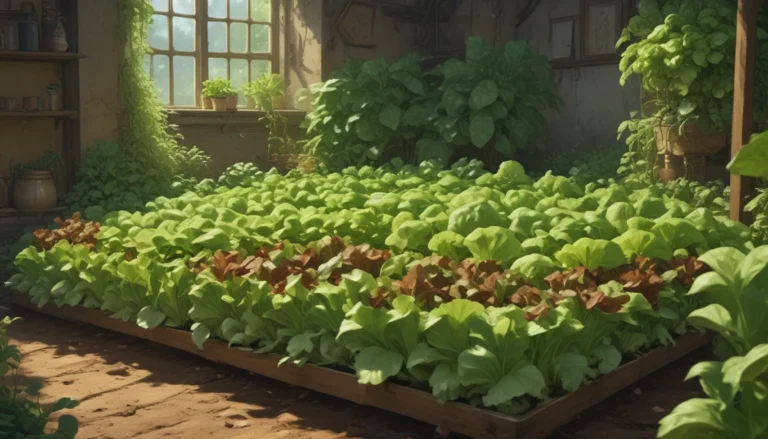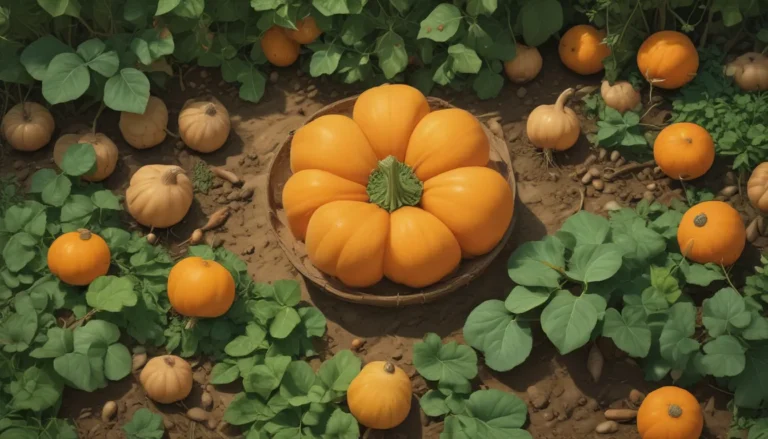A Comprehensive Guide to Growing Thai Basil in Your Herb Garden

Are you a fan of exotic flavors and looking to add some zest to your cooking? If so, you’ve probably encountered Thai basil, a flavorful herb that can transform your dishes. In this in-depth guide, we will explore the wonderful world of Thai basil, from its cultivation and history to propagation, growing tips, maintenance, and recipes. Let’s dive in and learn how to grow Thai basil in your herb garden!
What Is Thai Basil?
Thai basil, botanically known as Ocimum basilicum var. thyrsiflora, is a distinct type of basil with a spicier flavor profile compared to sweet basil. It features notes of anise or licorice, adding a unique kick to your culinary creations. This herb is popular in Vietnamese, Thai, and Malaysian cuisines, offering a bold and aromatic taste to dishes.
When it comes to cultivation, Thai basil stands out with its smaller leaves, serrated edges, and stronger flavor. The plant’s stem and flowers often boast hues of purple or red, creating a visual delight in your garden. Unlike sweet basil, Thai basil thrives in hot climates and is more resilient against heat stress.
Cultivation and History
The history of Thai basil traces back to its origins in India, Southeast Asia, the Middle East, or western China. While the exact origins remain shrouded in mystery, Ocimum species have been integral to ancient civilizations in Egypt, Greece, and Jewish traditions. Thai basil, along with other basil cultivars, gradually diversified into distinct flavor profiles, with Thai basil becoming a staple in Asian cuisines.
Propagation
Thai basil can be propagated through seeds, cuttings, or transplanting seedlings. When growing from seeds, plant them about a quarter of an inch deep and space them 12 inches apart. Keep in mind that seeds may have a lower germination rate, so plant extras to ensure a successful harvest.
For those opting for cuttings, simply select a stem with a few leaves and place it in water to encourage root growth. Transplanting seedlings into well-draining, nutrient-rich soil is another effective propagation method. Regardless of the method you choose, Thai basil is relatively easy to propagate and maintain.
From Seed
Thai basil seeds are easy to grow but may require additional care due to their lower germination rate. Ensure proper spacing and provide adequate sunlight and water for optimal growth. Consider starting seeds indoors before transplanting them outdoors to boost their early development.
From Cuttings
Rooting Thai basil cuttings is a simple process that yields new plants with minimal effort. By following basic guidelines on selecting healthy stems and providing proper water and light conditions, you can propagate Thai basil cuttings with great success.
From Seedlings/Transplanting
Transplanting Thai basil seedlings requires attention to soil quality and hardening off practices. Ensure the soil is rich in nutrients and well-draining, and gradually expose seedlings to outdoor conditions before planting them in your garden. By following these steps, your Thai basil plants will thrive and produce abundant yields.
How to Grow
Thai basil thrives in full sun, requiring at least six hours of direct sunlight each day. Adequate moisture and well-draining soil are essential for healthy growth and leaf production. Consider planting Thai basil alongside complementary herbs like tomatoes, parsley, cilantro, and chives for a harmonious herb garden.
To maintain Thai basil’s vigor, regularly pinch back stems to encourage bushier growth and remove any flowers that appear. Providing proper nutrients, water, and sunlight will ensure robust growth and flavorful leaves for your culinary delights.
Growing Tips
- Thai basil requires at least six hours of full sun daily.
- Keep the soil consistently moist, ensuring proper drainage.
- Fertilize early in the growing season and monthly as needed.
- Pinch back stems and flowers to promote leaf growth and maintain plant health.
Maintenance
Maintaining Thai basil involves regular pruning, watering, and fertilizing to support its growth and flavor production. By keeping a close eye on pests and diseases common to basil plants, you can prevent potential issues and ensure a healthy harvest. Remember to trim back flowers and harvest seeds for future plantings or culinary uses.
Hybrids to Select
Various Thai basil hybrids offer unique characteristics and flavors for your herb garden. From ‘Cardinal’ with vibrant red blossoms to ‘Siam Queen’ with large licorice-flavored leaves, these hybrids cater to diverse culinary preferences and garden aesthetics. Experiment with different Thai basil cultivars to discover your favorite flavor profiles and plant varieties.
Managing Pests and Disease
Thai basil is susceptible to common pests like aphids, Japanese beetles, and slugs, as well as fungal diseases such as damping off and Fusarium wilt. Implementing preventive measures like cleaning tools, ensuring proper spacing, and using natural fungicides can help protect your plants from pests and diseases. By monitoring your Thai basil plants regularly, you can address any issues promptly and maintain a healthy herb garden.
Harvesting
Harvesting Thai basil leaves and seeds allows you to enjoy their fresh flavors in various dishes and preserves their aromatic qualities for future use. Carefully pluck leaves in the morning and remove flowers to encourage leaf growth. If collecting seeds, wait for the flowers to mature and dry before harvesting and storing them in a cool, dark place.
Preserving
Preserving Thai basil through freezing or drying methods extends its shelf life and enables year-round use in your cooking. By blanching and freezing leaves or baking and storing dried leaves, you can retain Thai basil’s flavor and aroma for extended periods. Explore different preservation techniques to find the best method for your culinary needs and storage preferences.
Recipes and Cooking Ideas
Thai basil leaves are versatile ingredients that enhance a wide range of dishes, from salads and curries to noodles, rice dishes, and desserts. Experiment with incorporating Thai basil into various recipes to discover new flavor combinations and culinary experiences. Consider using Thai basil stems and flowers in creative ways to elevate your dishes and add visual appeal to your meals.
Quick Reference Growing Guide
When growing Thai basil in your herb garden, refer to this quick reference guide for essential information on planting, maintenance, and companion planting:
- Plant Type: Perennial herb, grown as an annual
- Tolerance: Moist soil
- Native to: Asia
- Maintenance: Low
- Hardiness (USDA Zone): 10-11
- Soil Type: Rich, loamy
- Season: Summer
- Soil pH: 6.5-7.5
- Exposure: Full sun
- Soil Drainage: Well-draining
- Time to Maturity: 60-90 days
- Companion Planting: Cilantro, chives, parsley, tomatoes
- Spacing: 12 inches
- Avoid Planting With: Bay, rosemary, sage
Explore your culinary creativity with Thai basil and enjoy the rich flavors and aromas it brings to your dishes. Whether you’re a seasoned herb gardener or a beginner exploring new flavors, growing Thai basil offers a rewarding experience and an abundance of culinary possibilities. Share your Thai basil growing adventures and cooking experiments in the comments below – we’d love to hear about your herb garden journey!
Lastly, if you’re interested in expanding your herb garden, check out our guides on basil cultivation, seed harvesting, and fall and winter growing tips. By exploring different basil varieties and growing methods, you can create a vibrant herb garden that caters to your culinary preferences and gardening aspirations. Happy herb growing!





